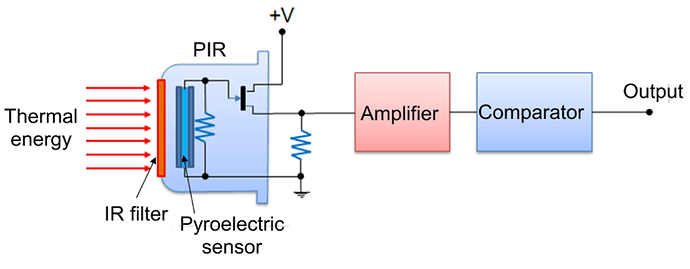Pyroelectric sensors work on the principle of pyroelectricity, which states that a crystal material such as Lithium tantalite generates charge in response to heat flow. In presence of an electric field, when such a crystal material heats up, its electrical dipoles line up as shown in figure. This is called as polarization.
Pyroelectric Sensors
On cooling, the material retains its polarization. In absence of electric field, when this polarized material is subjected to infra red irradiation, its polarization reduces. This phenomenon is the measure of detection of movement of an object.
Pyroelectric sensor comprises of a thick element of polarized material coated with thin film electrodes on opposite faces as shown in below figure.
Initially the electrodes are in electrical equilibrium with the polarized material. On incident of infra red, the material heats up and reduces its polarization. This leads to charge imbalance at the interface of crystal and electrodes.
To balance this disequilibrium, measurement circuit supplies the charge, which is calibrated against the detection of an object or its movement.
Applications of Pyroelectric sensors
• Intrusion detector
• Optothermal detector
• Pollution detector
• Position sensor
• Solar cell studies
• Engine analysis

